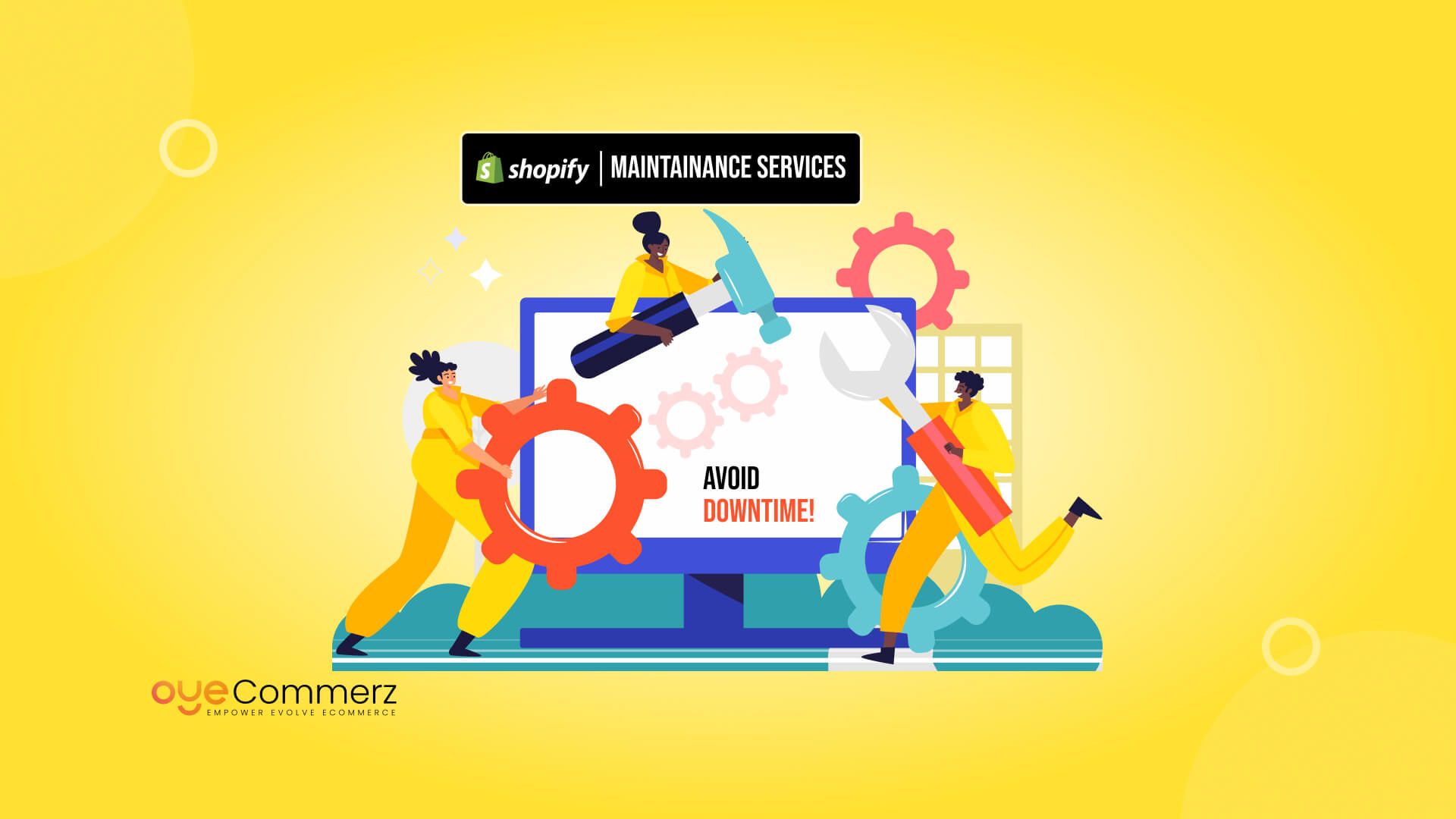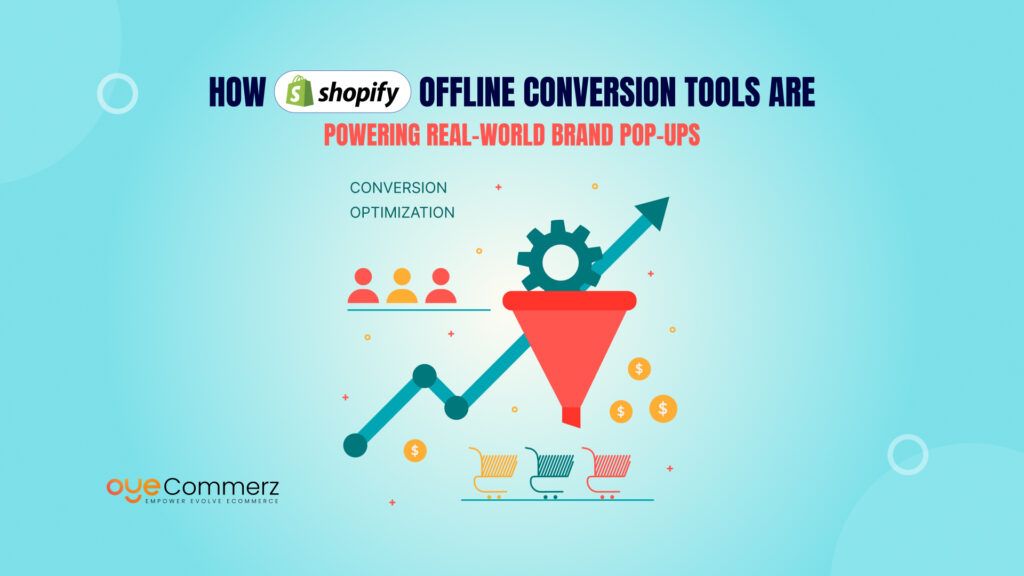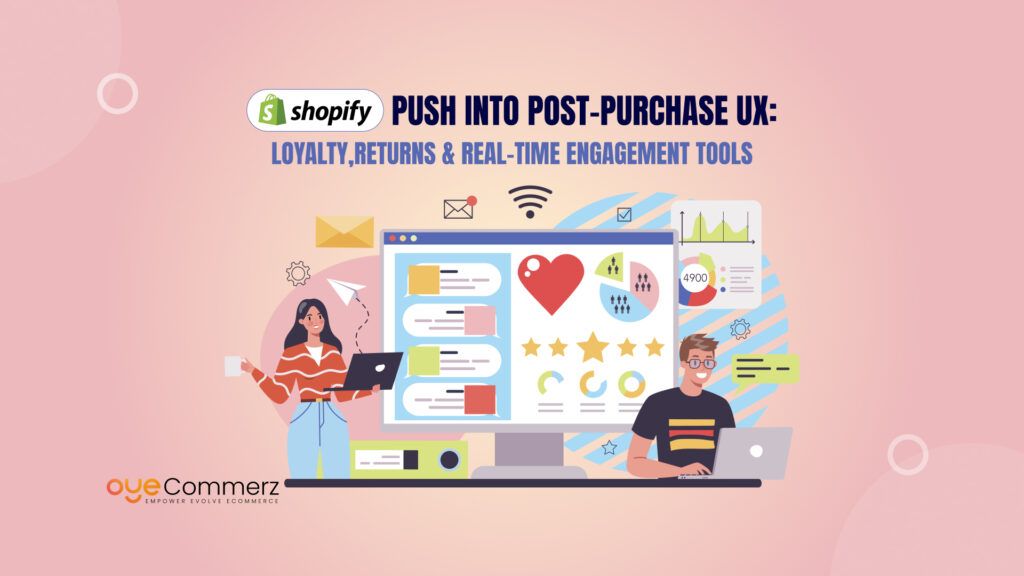“Imagine waking up to find your Shopify store down—no sales, frustrated customers, and a dent in your brand’s reputation. Sounds like a nightmare, right?”
Downtime isn’t just an inconvenience; it’s a revenue killer. Every second your store is offline, potential customers bounce, sales plummet, and trust erodes. Slow loading speeds, checkout errors, or security vulnerabilities can drive shoppers straight to your competitors. Worse, search engines penalize unstable websites, tanking your SEO rankings.
That’s where professional Shopify maintenance services come in. With proactive monitoring, regular updates, and security checks, experts ensure your store runs smoothly 24/7. Instead of scrambling to fix issues after they happen, you prevent them before they even start.
A well-maintained Shopify store isn’t just about avoiding downtime—it’s about delivering a flawless shopping experience that keeps customers coming back. Ready to safeguard your online business?
Let’s dive into how you can keep your store running at peak performance!
Understanding Shopify Downtime
Picture this: A customer is ready to buy, cart full, credit card in hand—only to find your Shopify store down. Frustrated, they leave, likely never to return. That’s downtime in action, and it’s more damaging than most store owners realize.
What is Downtime & Why Does It Happen?
Downtime is any period when your Shopify store is inaccessible or malfunctioning. It can last seconds, minutes, or even hours—and in eCommerce, every second counts. Whether it’s a full website crash, slow loading times, or checkout failures, the impact is the same: lost revenue, lost trust, and lost SEO rankings.
Common Causes of Shopify Downtime
- Server Issues – While Shopify’s hosting is reliable, occasional outages or high traffic spikes can temporarily take your store offline.
- Theme or Plugin Conflicts – A poorly coded app or an outdated theme can break your site’s functionality, causing pages to load incorrectly or crash.
- Coding Errors – Custom development gone wrong? A single line of bad code can trigger critical errors, making your store unresponsive.
- Payment Gateway Failures – If your checkout system goes down, sales stop instantly. Issues with third-party payment processors can disrupt transactions.
The Cost of Downtime: Sales, Trust & SEO
- Lost Sales: Every minute of downtime equals potential lost revenue. In peak seasons, even short outages can cost thousands.
- Damaged Customer Trust: Shoppers expect seamless experiences. If they encounter errors or crashes, they may never return.
- SEO Penalties: Search engines prioritize reliable sites. Frequent downtime can lead to lower rankings, reducing organic traffic.
The good news? With proactive maintenance, you can prevent these issues before they happen.
Signs Your Shopify Store Needs Maintenance
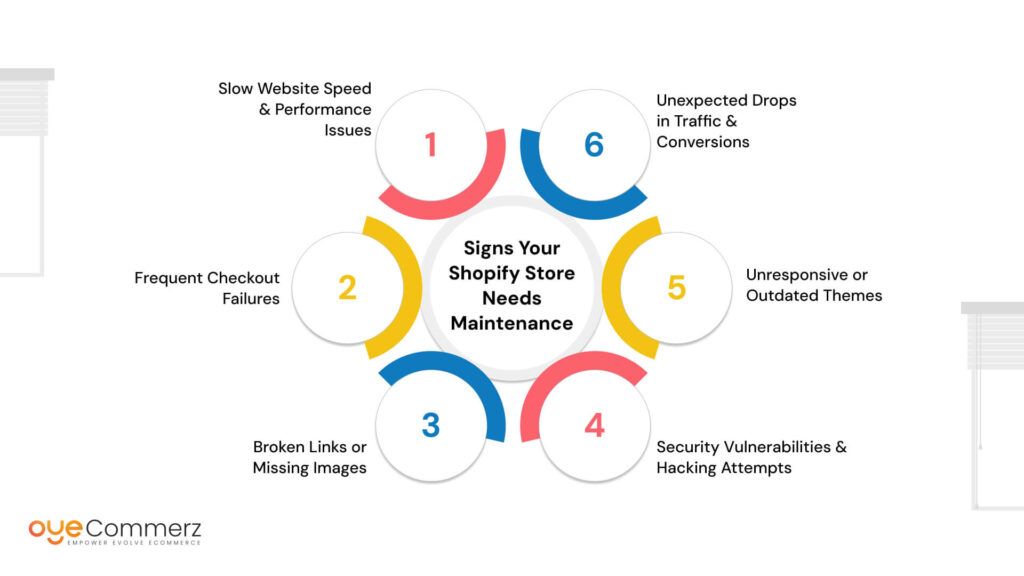
Running an online store is like maintaining a high-performance vehicle. You wouldn’t drive thousands of miles without servicing your car, right? The same applies to your Shopify store. Regular maintenance keeps it running smoothly, prevents breakdowns, and ensures customers have a seamless shopping experience. But how do you know when it’s time for a tune-up? Here are the key warning signs you shouldn’t ignore.
1. Slow Website Speed & Performance Issues
In eCommerce, speed is everything. A one-second delay in page load time can slash conversions by 7%. If your Shopify store takes too long to load, and has poor website performance customers will abandon their carts and head straight to competitors.
Example: Imagine a customer trying to browse your products, but each click takes forever to load. Frustrated, they leave before making a purchase. The culprit? Unoptimized images, excessive apps, or outdated code bogging down your site.
2. Frequent Checkout Failures
Your checkout page is where the magic happens—until it doesn’t. If customers repeatedly face errors while making payments, your revenue takes a hit. Issues like payment gateway failures, session timeouts, or buggy cart functions can turn eager buyers into lost sales.
Example: A customer selects their items, enters payment details, and clicks “Buy Now,” only to get an error message. Not only have you lost that sale, but they may never trust your store again.
3. Broken Links or Missing Images
A website riddled with broken links or missing images screams unprofessionalism. It confuses visitors, makes navigation frustrating, and signals to search engines that your site isn’t well-maintained.
Example: A customer clicks on a product from a Google search but lands on a “404 Page Not Found.” Annoyed, they leave and find a competitor with a smoother experience.
4. Security Vulnerabilities & Hacking Attempts
Cyber threats are real, and eCommerce sites are prime targets for hackers. If you notice suspicious activity, unauthorized logins, or spammy redirects, your Shopify store could be at risk.
Example: If customer data gets compromised due to weak security measures, your brand’s reputation will suffer, and legal troubles could follow. Regular security updates and monitoring help prevent breaches.
5. Unresponsive or Outdated Themes
A modern, mobile-friendly design isn’t just a luxury—it’s a necessity. If your Shopify theme is outdated or doesn’t adapt well to different devices, you’re losing customers.
Example: More than 70% of shoppers browse on mobile. If your store looks great on desktop but appears clunky on mobile, you’re driving away a huge chunk of your audience.
6. Unexpected Drops in Traffic & Conversions
If your website traffic or sales suddenly take a nosedive without any clear reason, it could be due to SEO issues, broken pages, or slow site performance.
Example: You’re ranking well on Google one month, but suddenly, traffic drops. This could be due to downtime, broken links, or technical errors that Google penalizes.
Ignoring these warning signs can cost you sales, customers, and brand credibility. The solution? Regular Shopify maintenance to keep your store in top shape.
Key Benefits of Professional Shopify Maintenance Services
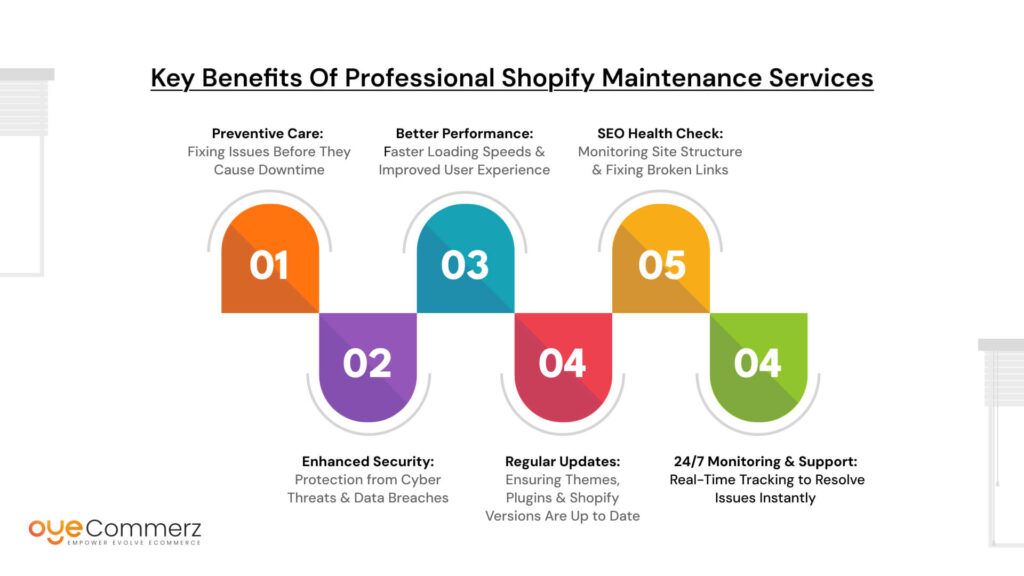
Running a Shopify store isn’t just about listing products and waiting for sales to roll in. Your website needs constant upkeep to ensure smooth performance, security, and customer satisfaction. Neglecting maintenance is like skipping routine checkups for your car, it might seem fine today, but problems will pile up until something breaks. That’s where professional Shopify maintenance services come in. Let’s explore the key benefits that can keep your store running at peak performance.
1. Preventive Care: Fixing Issues Before They Cause Downtime
Would you rather deal with a minor issue today or a full-blown disaster tomorrow? Professional maintenance ensures small glitches don’t snowball into major breakdowns.
Example: Let’s say an outdated app is causing occasional checkout errors. A maintenance expert will identify and fix the issue before it leads to abandoned carts and lost sales.
2. Enhanced Security: Protection from Cyber Threats & Data Breaches
Cybercriminals are always looking for vulnerabilities in online stores. A single security lapse can expose customer data, leading to trust issues and even legal consequences. Professional maintenance services implement firewalls, malware scans, and security patches to keep your store safe.
Example: Imagine waking up to find your store hacked, redirecting visitors to a phishing site. A security-focused maintenance team would have detected and blocked the breach before it happened.
3. Better Performance: Faster Loading Speeds & Improved User Experience
A slow website is a conversion killer. Every extra second of load time can drive customers away. Maintenance services optimize images, clear unnecessary code, and streamline your site to ensure lightning-fast speeds.
Example: A customer browsing your store on mobile experiences lag and delays. Frustrated, they leave. A maintenance expert ensures your Shopify store loads instantly across all devices, improving user experience and conversions.
4. Regular Updates: Ensuring Themes, Plugins & Shopify Versions Are Up to Date
Outdated themes and plugins can create compatibility issues, leading to functionality breakdowns or even site crashes. Shopify frequently releases updates to improve performance and security, and keeping your store updated is crucial.
Example: A new Shopify update rolls out, but your store is still running on an old version. This can cause checkout errors or broken features. Regular updates prevent such issues and keep your store fully functional.
5. SEO Health Check: Monitoring Site Structure & Fixing Broken Links
SEO isn’t just about keywords, it’s also about how well your site functions. Broken links, duplicate content, and poor site structure can hurt your search rankings. Maintenance services perform routine SEO audits to keep your store visible in search engines.
Example: You have product pages that no longer exist, leading to “404 errors.” These hurt SEO and frustrate users. Regular maintenance ensures such issues are fixed before they impact your rankings.
6. 24/7 Monitoring & Support: Real-Time Tracking to Resolve Issues Instantly
Technical problems don’t follow a 9-to-5 schedule. Having a professional team monitor your store 24/7 means any issue is caught and resolved before it affects your business.
Example: Your payment gateway suddenly stops working at midnight, blocking purchases. Without monitoring, you’d only notice it the next morning—after losing sales. With 24/7 support, the issue is fixed immediately, preventing lost revenue.
Professional Shopify maintenance isn’t an expense—it’s an investment in your store’s long-term success. With expert care, you avoid downtime, improve security, and deliver a flawless shopping experience that keeps customers coming back.
Essential Shopify Maintenance Tasks

Maintaining a Shopify store isn’t just about fixing problems when they arise—it’s about preventing them before they even happen. Regular maintenance ensures your store runs smoothly, loads quickly, and remains secure, providing customers with the best possible shopping experience. Here are the essential maintenance tasks every Shopify store owner should prioritize.
1. Performance Optimization: Keeping Your Store Fast & Smooth
A slow website is the quickest way to lose potential customers. Research shows that if a page takes more than three seconds to load, nearly 40% of visitors will leave. That’s why performance optimization is a critical part of Shopify maintenance.
- Image Compression: High-resolution images look great, but they slow down your site. Compressing images using tools like TinyPNG or Shopify’s built-in optimizer can drastically reduce load times.
- Caching & Minifying Code: Too many HTTP requests or bloated code can slow your store down. Shopify maintenance experts use caching techniques and minimize CSS/JavaScript files to enhance speed.
- Regular Speed Testing: Using tools like Google PageSpeed Insights or GTmetrix, professionals regularly test your site’s speed and make adjustments to keep it running at peak performance.
Example: If your homepage is cluttered with high-resolution images and heavy scripts, it may take over 5 seconds to load. By optimizing images and enabling caching, that load time can be cut in half, improving conversions.
2. Bug Fixes & Error Resolution: Keeping Everything Functional
Nothing frustrates customers more than broken features. If buttons don’t work, checkout pages fail, or product descriptions don’t load properly, you risk losing sales.
- Fixing Checkout Errors: If customers experience failed payments or glitches while checking out, they’ll likely abandon their carts. Regular audits ensure everything functions smoothly.
- Resolving Theme Issues: Custom themes often have hidden bugs that can affect functionality. Shopify maintenance experts continuously test and fix theme errors to prevent display issues.
- Broken Scripts & Redirects: Whether it’s a non-functional “Add to Cart” button or a broken discount code, regular maintenance ensures all scripts and links work properly.
Example: Imagine a customer tries to apply a 20% discount code, but the checkout page won’t accept it due to a script error. Without maintenance, this could go unnoticed, costing you sales.
3. Regular Backups & Security Updates: Protecting Your Store
Cyber threats and unexpected crashes can put your Shopify store at risk. Regular backups and security patches keep your business safe.
- Automated Backups: Regularly backing up your store ensures that if something goes wrong, you won’t lose important data. Services like Rewind or Shopify’s own backup tools can restore lost information instantly.
- Security Patches: Hackers constantly look for vulnerabilities. Shopify maintenance includes installing security patches and updating software to keep your store secure.
Example: A hacker finds a loophole in an outdated Shopify plugin and gains access to customer data. A security-focused maintenance plan would have detected and fixed the vulnerability before it became a threat.
4. SEO & UX Enhancements: Keeping Your Store Search-Friendly
Your store’s visibility depends on SEO, and your user experience (UX) determines whether visitors stay or leave. Regular Shopify maintenance includes:
- Fixing Broken Links: Pages that return a “404 Error” hurt your search rankings and frustrate customers. Routine checks prevent this.
- Mobile Responsiveness: More than 70% of eCommerce traffic comes from mobile devices. If your site isn’t mobile-friendly, you’re losing customers.
- Optimizing Page Structure: Well-organized product pages, fast-loading images, and structured content improve search rankings and usability.
Example: If your product pages have missing meta descriptions, slow load times, and broken links, search engines will rank your site lower, making it harder for customers to find you.
5. App & Plugin Management: Keeping Only What’s Necessary
Shopify apps and plugins enhance your store’s functionality, but outdated or unnecessary ones can slow it down and cause conflicts.
- Removing Unused Apps: Many Shopify store owners install apps but forget to remove them. Each app can add extra code, slowing down the site.
- Updating Plugins: Apps and plugins must be regularly updated to maintain compatibility with Shopify’s latest features.
Example: An outdated SEO plugin causes your product descriptions to display incorrectly. A regular maintenance check ensures that all apps and plugins are up to date and functioning properly.
DIY vs. Professional Shopify Maintenance
Maintaining a Shopify store is a continuous process, and many store owners face a common dilemma, should they handle maintenance themselves or hire a professional? While some tasks can be managed in-house, others require expert intervention to ensure the smooth running of your store. Let’s break down when DIY works and when it’s best to call in the pros.
When DIY Works
Not every Shopify task requires a professional. If you’re comfortable navigating Shopify’s dashboard, you can handle some minor updates on your own.
- Adding New Products: Updating product descriptions, images, or prices is straightforward and doesn’t require advanced technical knowledge.
- Changing Banners & Homepage Content: Want to refresh your store’s look with a new seasonal banner or homepage update? This is easy to do within Shopify’s theme editor.
- Fixing Minor Bugs: If a button is misaligned or a product image isn’t displaying correctly, basic troubleshooting (like refreshing your theme settings or checking app conflicts) can help resolve the issue.
- Installing Basic Apps: Need a countdown timer or a simple email pop-up? Many Shopify apps are plug-and-play, making them easy to install and configure.
Example: You want to launch a holiday sale and need to update banners, add new promotional products, and tweak some homepage text. These are simple DIY tasks you can handle without professional assistance.
When You Need a Professional Service
Some issues go beyond basic troubleshooting and require expert knowledge. Ignoring these problems can lead to bigger headaches like downtime, security breaches, or loss of sales.
- Technical Issues Beyond Basic Troubleshooting: If your checkout page isn’t working, payment gateways are failing, or customers are experiencing login errors, a professional can diagnose and fix the root cause efficiently.
- Custom Code Modifications: Want to personalize your Shopify theme or add unique features? Modifying Shopify’s Liquid code requires coding expertise, one wrong edit can break your entire store.
- Security Threats & Data Recovery: If your store has been hacked, customer data has been compromised, or malware has infected your site, immediate professional intervention is crucial to prevent further damage.
Example: Your store suddenly stops accepting PayPal payments, leading to abandoned carts. Instead of spending hours troubleshooting, a Shopify expert can quickly identify and resolve the issue, minimizing revenue loss.
Cost vs. Value: Why Professional Maintenance Saves Money
Many store owners hesitate to invest in professional maintenance, thinking it’s an unnecessary expense. However, in reality, the cost of NOT maintaining your store is much higher.
- Lost Sales Due to Downtime: If your store goes down for even an hour, you could lose thousands in potential revenue.
- Reputation Damage: A slow, buggy, or insecure site drives customers away. Rebuilding lost trust takes time and effort.
- Expensive Fixes Later: Ignoring small issues today often leads to major problems down the road, requiring costly emergency fixes
Choosing the Right Shopify Maintenance Service
Your Shopify store is the backbone of your business, and choosing the right maintenance service can mean the difference between a thriving, smooth-running store and a site riddled with issues. With so many options available, how do you pick the best one? Here’s what to look for.
Key Factors to Consider
- Experience & Expertise in Shopify Maintenance
Not all developers are Shopify specialists. Look for a provider with proven experience in maintaining Shopify stores, not just general web development. An expert will know the platform inside out and can handle issues quickly. - 24/7 Availability & Support
E-commerce never sleeps, and neither should your maintenance service. Imagine your checkout page breaking at midnight during a big sale. Can your provider fix it immediately? Opt for a service with round-the-clock monitoring and support to ensure instant issue resolution. - Comprehensive Service Offerings
A good maintenance plan should cover more than just bug fixes. Look for services that include:
Security updates to protect against cyber threats.
Regular backups to safeguard your data.
SEO optimization to keep your rankings high.
Performance tuning to ensure fast loading speeds. - Transparent Pricing & Flexible Plans
Hidden fees? Overpriced services? No thanks! Choose a provider with clear pricing and flexible plans that fit your business size and budget.
How to Choose a Maintenance Provider
- Check Reviews & Testimonials
What do other Shopify store owners say about them? Look for genuine client feedback on platforms like Trustpilot or Clutch. - Request Case Studies
A credible provider should have case studies showcasing how they’ve helped other Shopify stores boost performance, fix issues, and improve security. - Ask for a Trial or Consultation
Many providers offer free consultations or trial services, take advantage of them to gauge their expertise before committing.
The right maintenance partner doesn’t just fix problems, they prevent them from happening in the first place. Choose wisely!
Don’t wait for a major issue to take action! Audit your Shopify store today and consult a maintenance expert to keep your business running smoothly. A little prevention now can save you from major headaches later
Contact to Migrate your Site to Shopify Now
Conclusion
Running a successful Shopify store isn’t just about great products and marketing—it’s about ensuring your website operates flawlessly. Downtime, slow speed, security vulnerabilities, and checkout failures can quietly eat away at your revenue and customer trust. Regular maintenance keeps your store fast, secure, and optimized, giving your visitors a seamless shopping experience.
Think of Shopify maintenance services like servicing a car—if you ignore small issues, they turn into costly breakdowns. By staying proactive with expert maintenance, you avoid unexpected disruptions, improve SEO rankings, and enhance overall store performance. A well-maintained store isn’t just functional; it’s a powerhouse for sales and growth.

